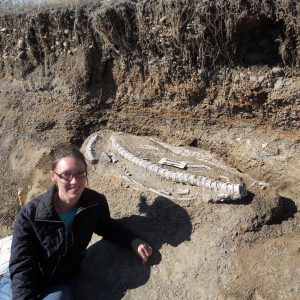The collection season is winding down here in Western Nevada, but that doesn’t mean there isn’t the opportunity for one last trip to Anaho Island National Wildlife Refuge on Pyramid Lake to collect native seed. Although it is early November and snow has returned to the higher elevations, there are still an abundance of chenopods, buckwheats, asters, camissonias, and a variety of other sagebrush steppe and salt desert scrub species in seed this time of year.

Team arriving at the Island on USFWS boats
We first travelled to Anaho Island back in June to collect seed from native grasses, forbs, and shrubs, which create an important habitat for the island’s population of American White Pelicans (Pelecanus erythrorhynchos). The colony is one of the two largest American White Pelican colonies in the western U.S. The island also supports a number of other colonial nesting and migratory bird species such as the Common Loon (Gavia immer), as well as a large population of rattlesnakes.

American White Pelicans off coast of Anaho
Our trips to Anaho Island have encompassed the multidisciplinary and cooperative nature of the CLM Internship and the Carson City BLM office. Although our team is comprised solely of Seeds of Success and botany interns, we had the opportunity to work with other federal agencies on natural resource issues at this wildlife refuge. The U.S. Fish and Wildlife Service manages the refuge and one of their bird biologists repeatedly escorted us out to the island on USFWS boats for our native seed collections. Also, on our last trip to the Anaho, we met up with U.S. Geological Survey biologists who were counting fish tags from the endangered Cui-ui (Chasmistes cujus), a large sucker fish endemic to Pyramid Lake and the most important food source for the American White Pelican colony there. The birds had regurgitated the fish tags, along with the skeletons of the fish they had consumed. We were able to help the USGS biologists count fish tags in addition to making our native seed collections. The seeds we collected can now be available for any restoration efforts that may be necessary at the wildlife refuge.
Besides all of the great work we were able to accomplish, perhaps the greatest part about our trips to Anaho Island was the fact that we had the opportunity to travel out there at all (the island is closed to the public because it is a wildlife refuge). We were able to enjoy the beautiful scenery, the unique ecosystem, and the amazing wildlife of the island, all while getting our Seeds of Success work done. This is just one of the great opportunities that we wouldn’t be exposed to without the CLM program and we are all very grateful to have participated in such interesting and important conservation work.

Pyramid Lake from Anaho Island
In addition to field work, we also have amazing opportunities to attend workshops and training with other scientists and ecologists. In August, our team was able to attend the “Vegetation Rapid Assessment/Relevé Workshop” given by the California native plant Society (CNPS) in South Lake Tahoe, CA. We had the chance to learn and practice current rapid vegetation assessment techniques with scientists from nonprofits, other federal agencies and academics in a unique fen habitat.
In September, our team attended the “Cheatgrass & Medusahead Management Workshop” hosted by Ecologically-Based Invasive Plant Management (EBIPM) in Reno, NV. We learned about weed management issues in Northern Nevada and Eastern California, as well as current experimental treatments from leading weed scientists. This workshop had over 100 participants from local conservation groups, federal agencies, and weed specialists.
In November, we will attend the Great Basin Connectivity and Climate Change Workshop Connectivity and Climate Change Workshop at the University of Nevada, Reno, where researchers will present assessments of riparian vegetation and animal habitat in additional to projections of connectivity for multiple species of animals and plants under different scenarios of environmental change. This will be another great chance to connect with scientists in our area and to learn more about important issues in conservation and natural resources management!
-Maggie Chan and John Krapek, CLM Interns, Carson City, NV




































